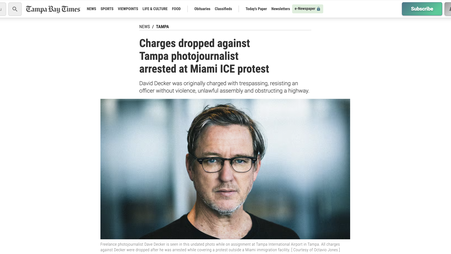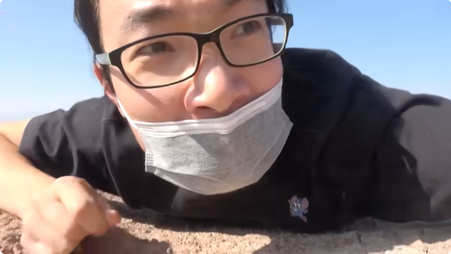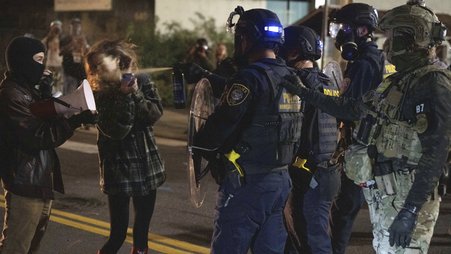New York police officers clearing protesters from Hamilton Hall at Columbia University last month also kicked out student journalists. Their motive wasn’t public safety, but public relations. They needed space to shoot their widely ridiculed “sizzle reel,” which set highlights of the raid over dramatic music.
That’s according to Columbia Journalism School Dean Jelani Cobb in a recent interview with the Knight First Amendment Institute. But it’s far from the New York Police Department’s only misstep in its recent dealings with journalists covering protests of the Israel-Gaza war.
Since Feb. 7, NYPD officers have arrested at least seven journalists covering protests, according to the U.S. Press Freedom Tracker. They’ve detained at least 10 more without processing – a “catch and release” tactic that takes journalists away from the news until the story is over.
They’ve also assaulted at least eight reporters, often breaking their equipment. And they’ve dispersed or otherwise prevented countless others from covering protests. Some were hit by chemical irritants along with protesters.
The Feb. 7 date is significant because that’s when a federal judge approved a settlement agreement to resolve claims by protesters and journalists over the NYPD’s response to racial justice protests in 2020. The judge rejected efforts by the Police Benevolent Association, a police union, to block the agreement.
With the war ongoing and a presidential election around the corner, there are sure to be plenty more protests for journalists to cover in the coming months. The NYPD needs to get its act together and uphold its commitments.
The settlement calls for an overhaul of how officers respond to demonstrations, including journalists covering them. Police committed to stop arresting journalists who are merely observing or recording them, to stop blocking off areas to the press, to allow journalists to cover protests even after a dispersal order (which the Department of Justice has recognized is required by the First Amendment), and to cut out those “catch and release” shenanigans.
It’s true that the settlement agreement does not contemplate an immediate 180 — police have some time to revise policies and train officers. But the response to Israel-Gaza war protests does not inspire confidence that the department takes its obligations seriously.
Mickey Osterreicher is general counsel for the National Press Photographers Association, which partnered with the law firm Davis Wright Tremaine to sue the NYPD on behalf of five photojournalists. He told the Tracker that, “From our perspective, they’re not living up to the terms of the agreement that we fought for three years to get.”
As details emerge about recent events, that’s sounding like an understatement. For example, there have been numerous reports of “kettling” of journalists (and protesters) — a controversial tactic where police surround people to form a barricade to stop them from moving freely. The NYPD committed to ban that practice in the settlement.
Those kettled include Columbia student journalists like Samaa Khullar. Police pushed other journalists into Pulitzer Hall, home of Columbia’s journalism school, and threatened arrest if they left. “Nobody was there to document what was happening,” said student journalist Francesca Maria Lorenzini, “so I feel like that night, freedom of the press was really severely limited.”
A May 4 letter from the editors of the Columbia Spectator further described abuses against student journalists — particularly problematic since outside journalists weren’t allowed in at all.
But the abuse didn’t stop at Columbia. In a May 7 incident filmed by photojournalist Jon Farina, an officer shoved another photojournalist, Olga Fedorova, to the ground, damaging her camera, and arrested her. They released her hours later without charges — but by that point the protests she was covering, near the Fashion Institute of Technology, were over.
“I received zero paperwork from them. It almost seemed like they wanted to make it go away, like it never happened,” Fedorova told the Tracker. Fedorova was also detained at another protest just a few weeks earlier where another journalist, Neil Constantine, was arrested.
Moments before Fedorova’s May 7 arrest, officers pulled to the ground, punched, and arrested yet another photojournalist, Josh Pacheco. Pacheco told the Tracker that officers callously looked them up and down before saying, “Male or female? Just pick one.”
A few days later officers were back at it, detaining journalists including Katie Smith on May 11 as they documented a pro-Palestinian protest on the Manhattan Bridge.
Most of these charges have been dropped, but authorities sometimes manage to violate journalists’ rights even when dropping charges by using deferred prosecution agreements to pressure reporters to tread carefully. Under these agreements, prosecutors agree to dismiss cases against journalists as long as they don’t get arrested again for similar conduct.
That’s a chilling commitment for reporters to have to make just to get rid of charges that weren’t justified in the first place. Journalist Ashoka Jegroo told the Tracker after taking one such deal, “Obviously I have to be a little bit more cautious now: I can’t take as many risks.”
Independent journalists like Jegroo are particularly vulnerable to these censorial agreements because the alternative may be to expend their own money and resources fighting charges (although organizations like the Reporters Committee for Freedom of the Press help journalists secure pro bono representation).
With the war ongoing and a presidential election around the corner, there are sure to be plenty more protests for journalists to cover in the coming months. The NYPD needs to get its act together and uphold its commitments. If not, it must be held accountable for its breaches.





